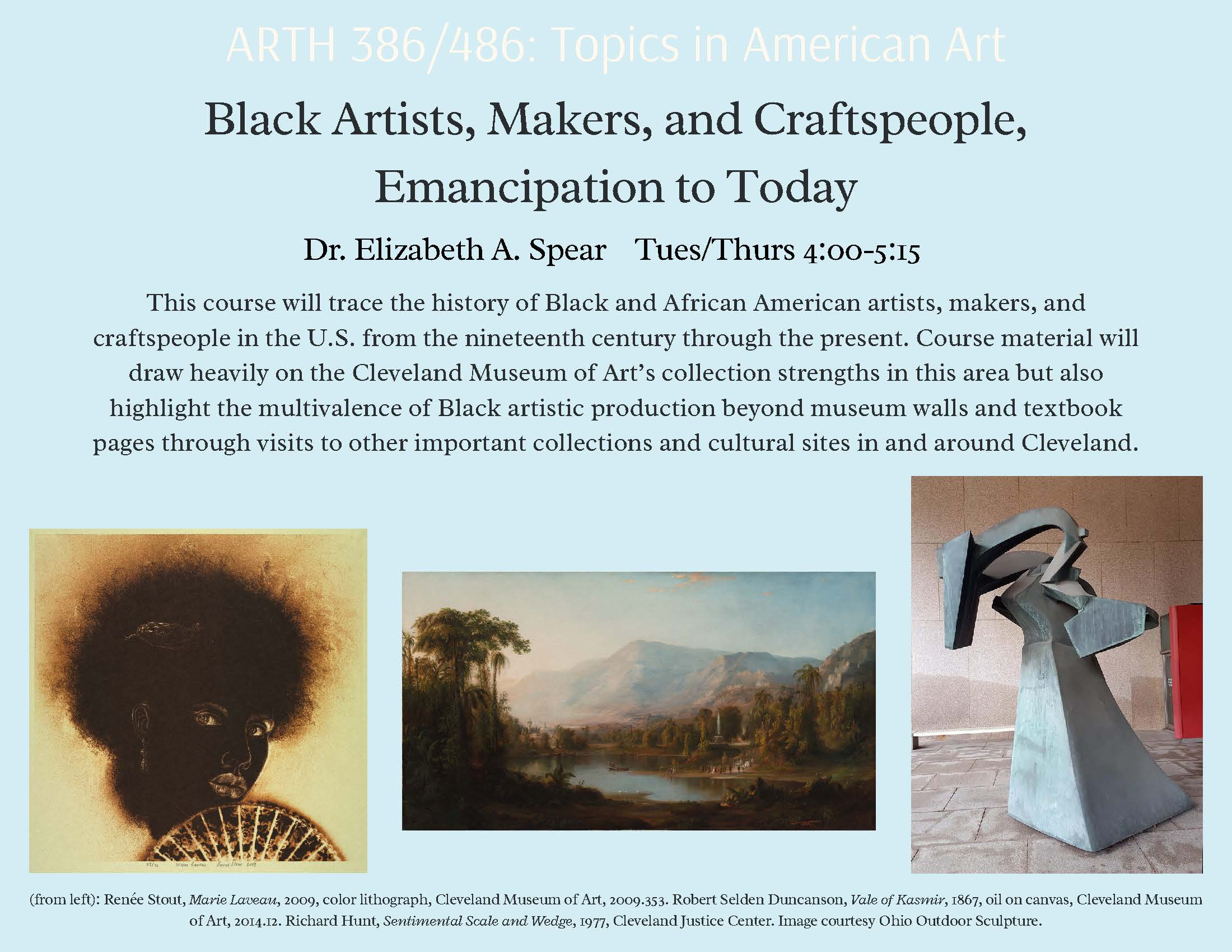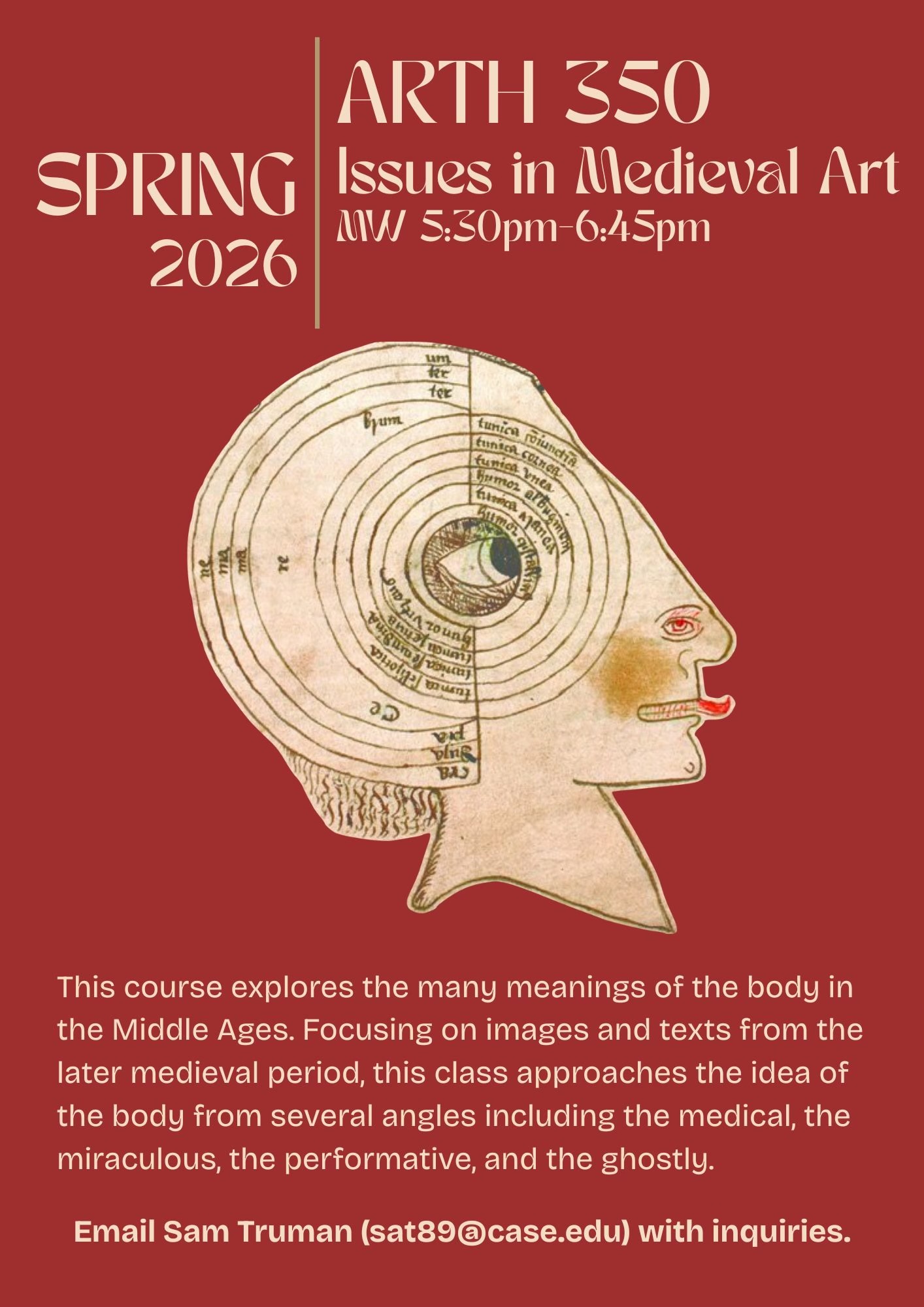Previous course offerings can be found here.
ARTH 102
Art History II. 3 Units
Instructor Samantha Truman
MWF 10:35-11:25

updating

Graduate Seminar, Spring 2026
Wednesdays, 4:00-6:30
Location TBD
Nomenclature affords precision but also sometimes obfuscates matters. What does the term Byzantium bring to mind? It is not a historical term – the people in question called themselves the Romans, as did just about everyone else. Many scholars are advocating for the word’s replacement with Medieval Rome, or Eastern Mediterranean Medieval Rome. What about Africa? That name is also problematic from a historical perspective. The Romans used the word for the thin slice of land at the north controlled by them – not for the entire continent. Africa is typically associated with Black peoples, although numerous other groups live there as well.
And what about Africa and Byzantium? First the name of a major exhibition at the Metropolitan Museum of Art and the Cleveland Museum of Art, it then referred to a scholarly symposium at Dumbarton Oaks in 2025. In this class, we will explore aspects of lived experience and visual culture in North Africa, Egypt, ‘Nubia,’ and Ethiopia – all regions that drew on aspects of Eastern Mediterranean Christianities to create their cultures and histories, whether they were ever part of Rome or not. Topics considered include historiography, monumental architecture, tomb decoration, “magic,” “religion” (and how they might be the same thing), ethics, “cultural heritage,” connectivity, archaeology, monasticism, identity, the sensorium and much more. The field of Eastern Roman studies in the continent we now call Africa is growing quickly. We will endeavor to participate in that expansion.
ARTH/ASIA/RLGN 263
The Arts of Asia
Prof. Rachel Quist
MWF 11:40am-12:30pm
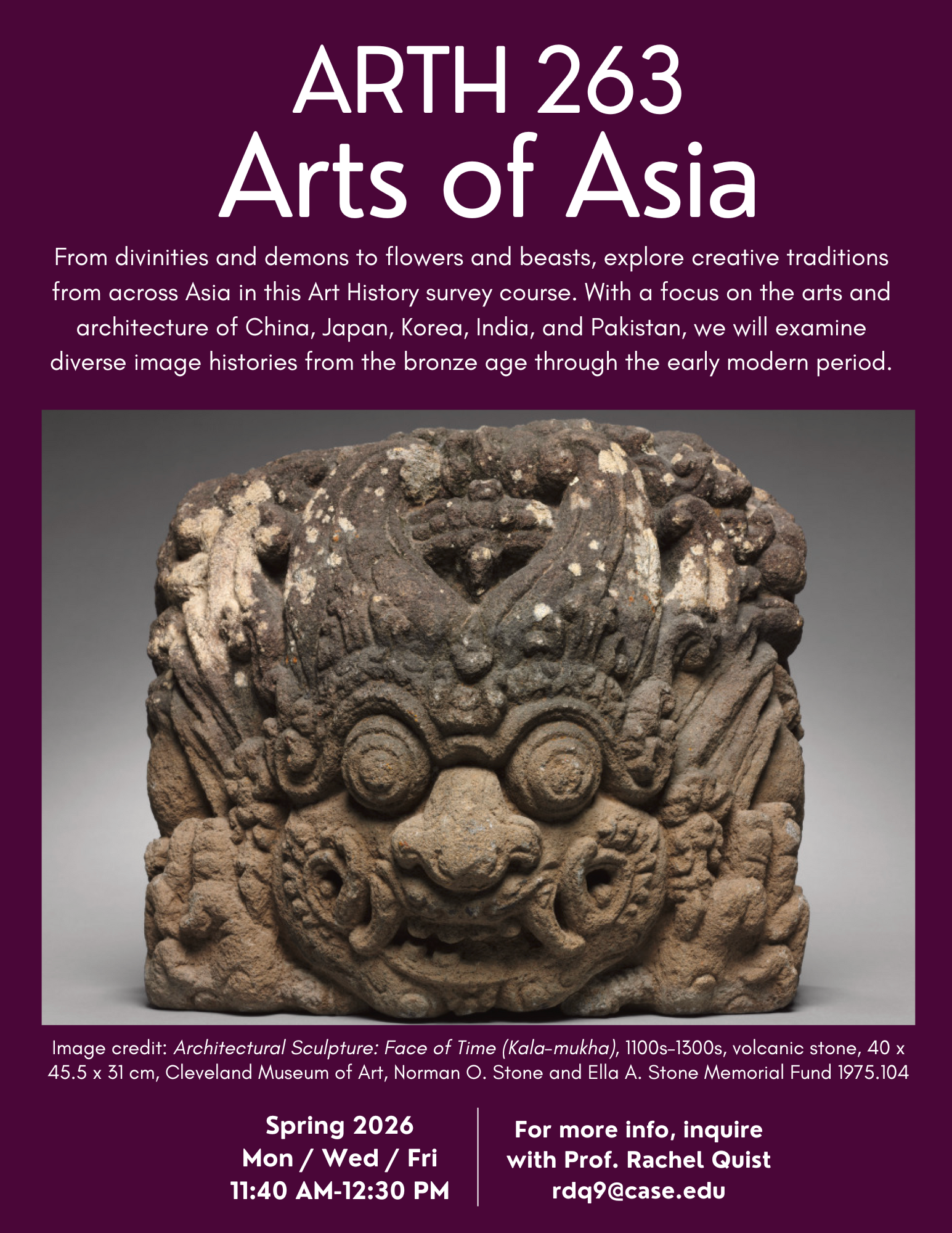
From divinities and demons to flowers and beasts, explore creative traditions from across Asia in this Art History survey course. With a focus on the arts and architecture of China, Japan, Korea, India, and Pakistan, we will examine diverse image histories from the bronze age through the early modern period.
ARTH 396
Majors Seminar
Prof. Erin Benay
TR 11:30am – 12:45pm

ARTH 150
An Introduction to the Universe and to the Meaning of Everything
Prof. Henry Adams
MW 12:45-2pm
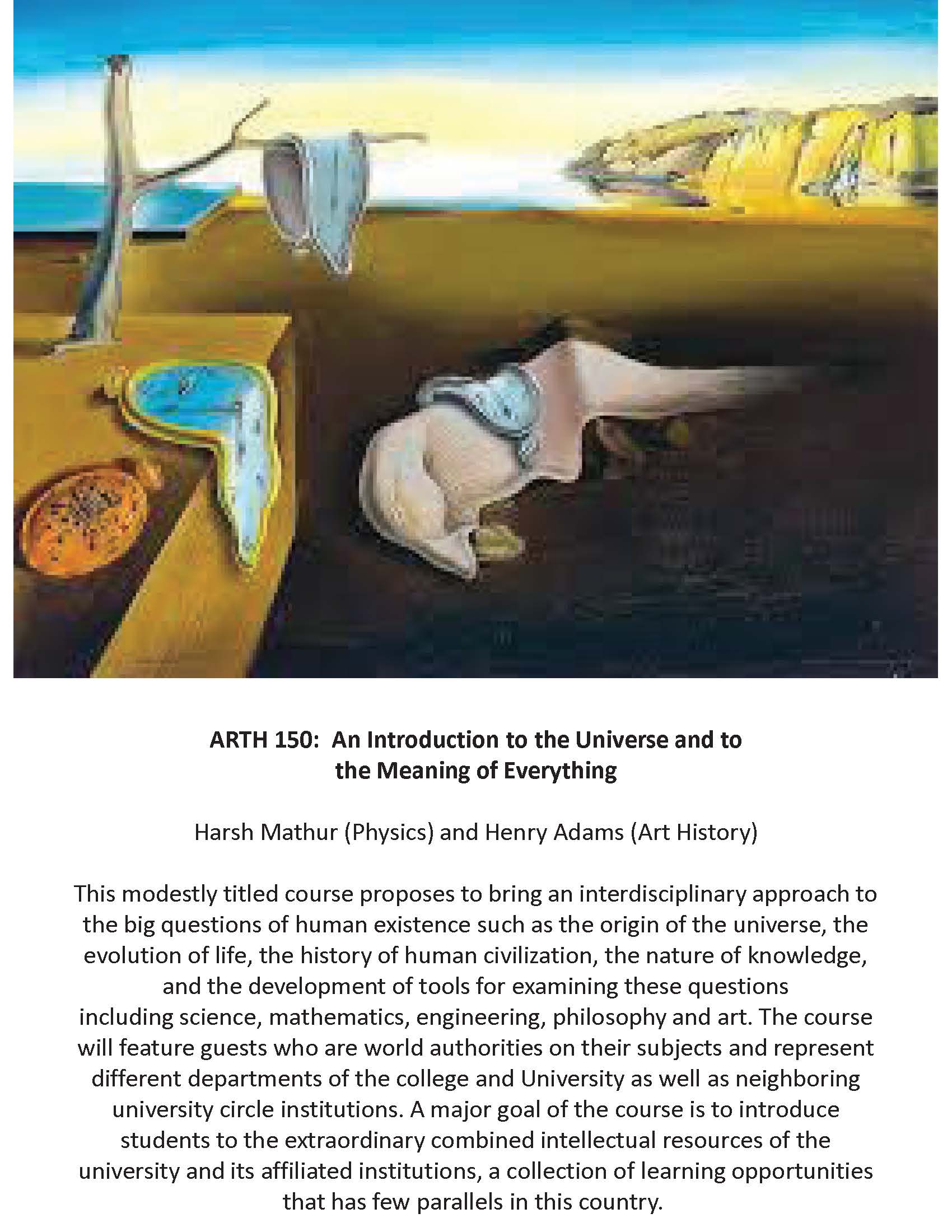

updating
ARTH 393/493
Global Perspectives on Contemporary Art
Prof. Benjamin Murphy
MWF 9:30am – 10:20am
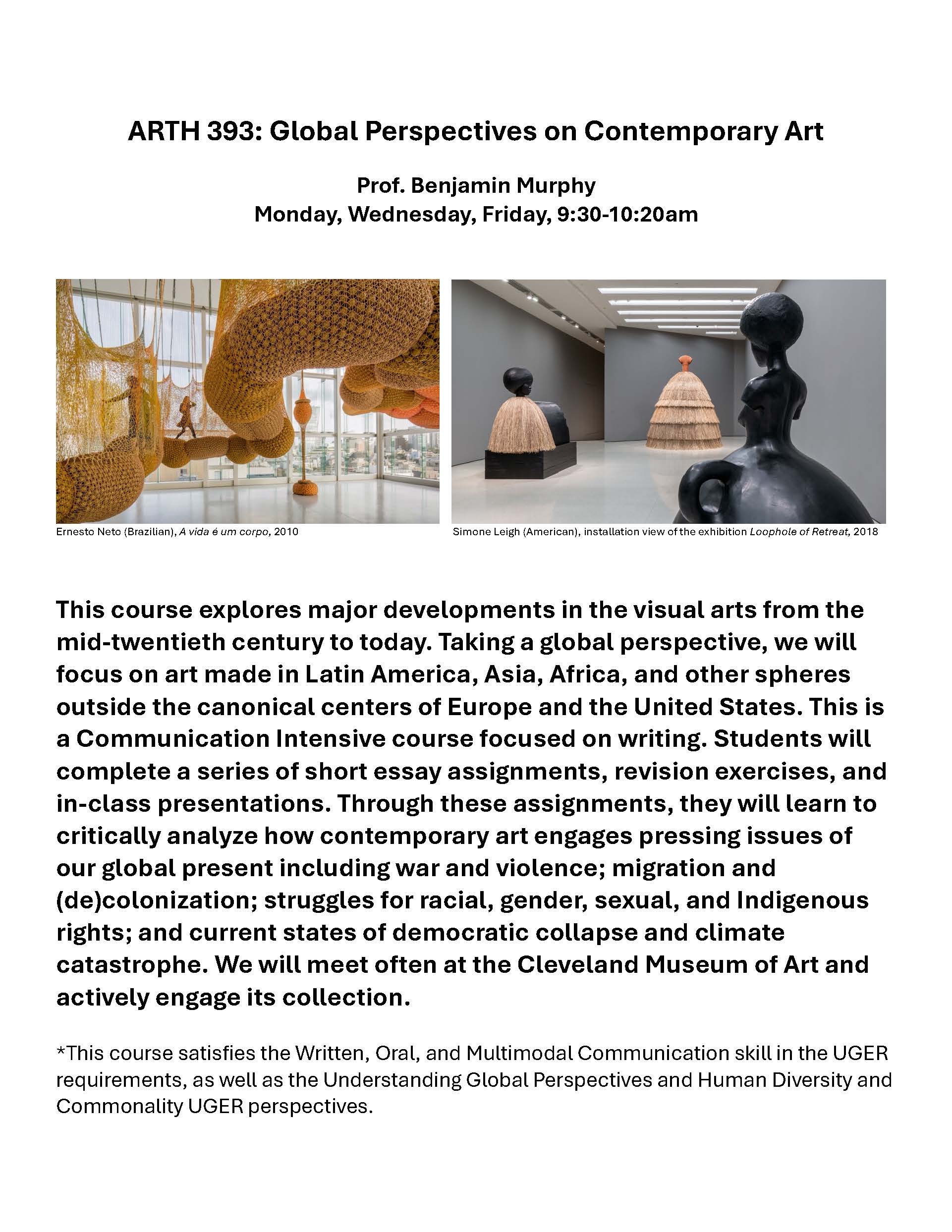
ARTH/HSTY 375/475
Doors Wide Shut: The Private Art Collection from Raphael to Rauschenberg
Prof. Erin Benay
TR 2:30pm – 3:45pm
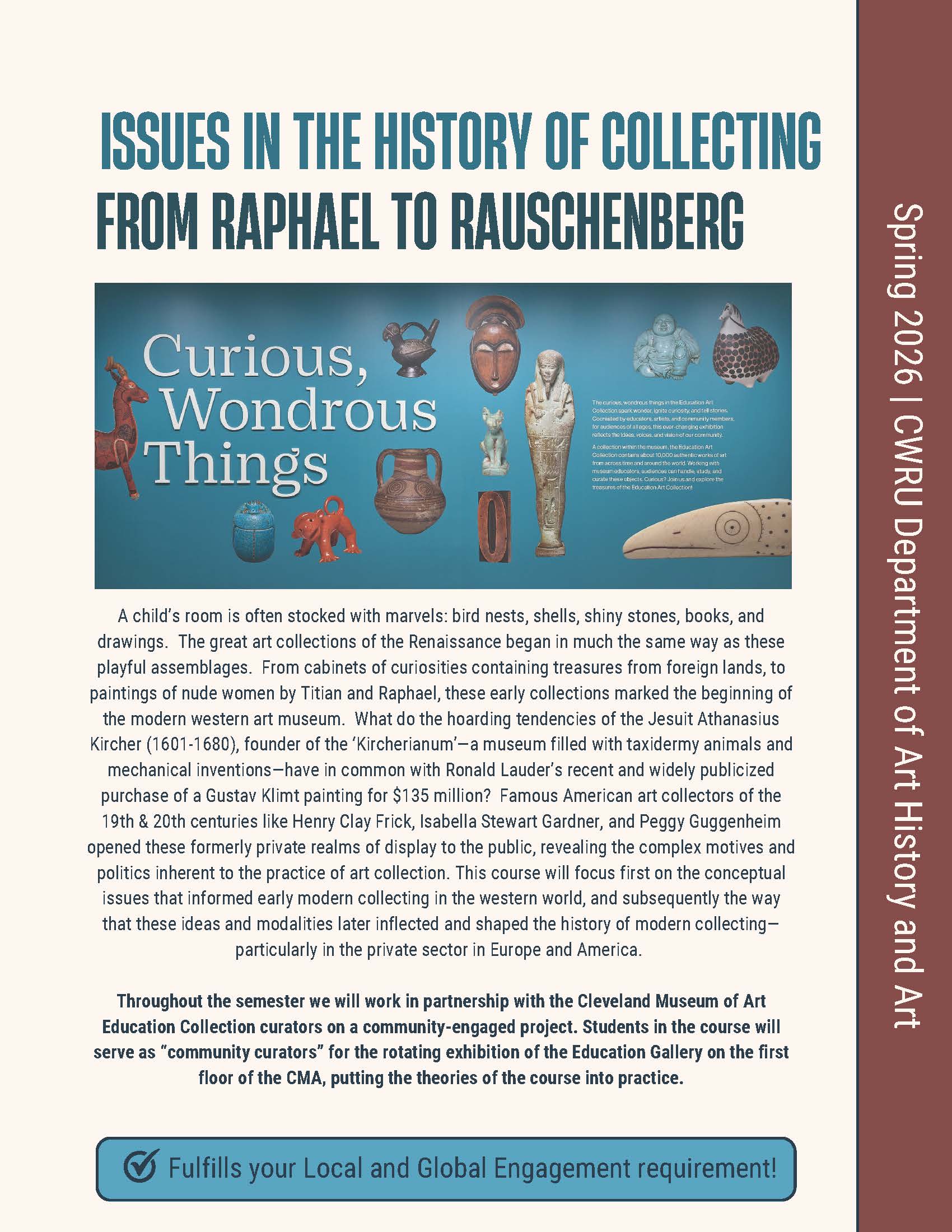
American Modernism in an International Perspective
Prof. Henry Adams
MW 4:50pm – 6:05pm
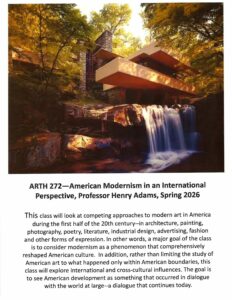

updating
War Games: Videogames and the US Military
Prof. Steven Ciampaglia
R 7pm-9:30pm

This course examines the longstanding and symbiotic relationship between the commercial videogame industry and the US Military, or what has been called the Military-Entertainment Complex. The first videogame, Spacewar!, was created by computer researchers at MIT in 1962, using nascent computer technology funded by the US Department of Defense. Since then, the commercial videogame industry has grown in tandem with—and partly thanks to—the US Military’s development of computer and digital technologies. Today, military-themed videogames have come to dominate the gaming industry and gamer culture. Indeed, the ubiquity of these games has facilitated the US Military’s recruitment efforts. Games such as America’s Army and Call of Duty present seductive depictions of armed combat and military service and specifically target young gamers. Enlisted soldiers are trained for actual warfare on simulators that are nearly indistinguishable from games. The line between “real” and “virtual” combat has become increasingly blurred, further conflating war with fun and games, and eclipsing moral and ethical concerns about the relationship between technology and violence.
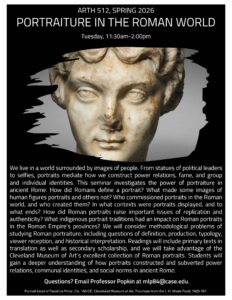
Seminar in Asian Art
Prof. Rachel Quist
F 3pm – 5:30pm
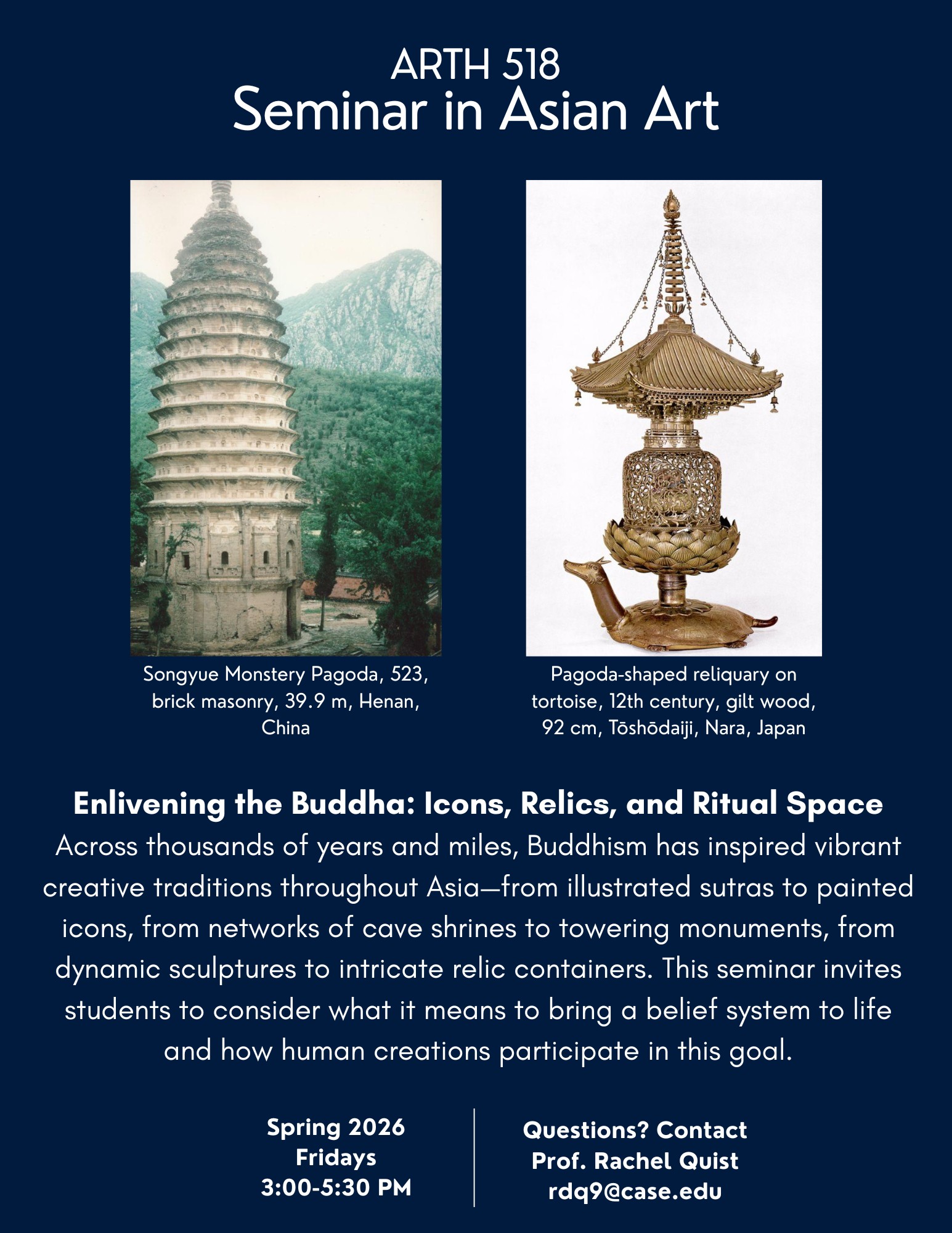

This foundational course will introduce students to the examination methods, terminology and goals of art conservation as it supports art historical research and practice. Students will learn about the various materials that make up different kinds of works of art, how these materials have been used, and what can be learned by the physical examination of works of art. Emphasis will be placed on understanding the uses of and results obtained with imaging techniques (such as X-radiography, infrared reflectography) and on what can be learned through the trained use of the human eye alone. While art from the western tradition, particularly from the 14th through the 21st centuries will be emphasized in class examples, comparisons will be made to objects from other global cultures. The growing field of technical art history, where the results of physical examination are used to illuminate art historical issues such as how workshops functioned, will be considered as well. Each student will research one work of art in the Cleveland Museum of Art or other local collections to understand the physical history and current condition of that object. The goal will be for students to gain an informed understanding of how to evaluate the condition of a work of art, of what options are available for conservation treatment, and of what art-historical information can be obtained through physical examination.
Issues in American Art
Instructor Elizabeth Spear
TR 4:00pm – 5:15pm
